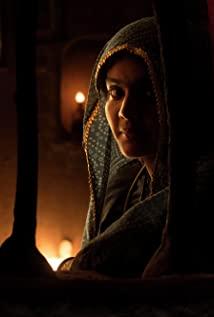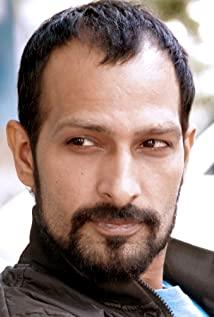In recent years, India has set off a wave of women's films. These films have attempted to construct feminism, played a role in dissolving the tension and contradictions inherent in patriarchal culture, and have positive social significance. However, influenced by mainstream commercial films and traditional Indian culture, these films also have certain limitations. I personally think that Indian women's films mainly include films from the perspective of women at the bottom directed by female directors represented by "Hot" and films with "Wrestling!" A film that expresses elite women from a third perspective, directed by male directors represented by "Dad" and "Toilet Hero". These two different perspectives lead to different narrative strategies.
The first is "Hot". Compared with most Indian female films made by male directors, "Hot" was shot by female director Lena Yadav. Female directors choose female subjects to create, which can effectively reduce male authority. Interventions in Women's Cinema. The film revolves around the life trajectories of the three female characters, as well as their friendship and yearning for a better life. The three female characters are Rani, who has been a widow for 15 years and is regarded by his son as a servant and nanny, who has the ability to improve the family's economic conditions but is domestically abused by her impotent husband, and Rani, who earns men's money by dancing Beige is regarded as a plaything by men. The three heroines are all located in the bottom class of India. In an extremely backward environment, they have almost no strength to fight against the patriarchal society, and even lack the opportunity to awaken women's consciousness. And the only positive male character, the man who can provide women with jobs, is beaten to death by other men. In the end, the three heroines are in a desperate situation, and the only way out is to save themselves. Rani sold his house, La Qiao let her husband be burned to death by fire, Bi Qili gave up her job and rode the tricycle of the Dance Troupe, and the three started a desperate escape. This climaxes and ends. The heroines from the bottom of the world help each other, escape their original predicament without the assistance of men, and move towards a hopeful future. This is the biggest difference between this film and other Indian women's films, and it is also a narrative strategy that the director uses as a woman. .
Unlike "Hot" directed by a female director, "Wrestle!" directed by a male director "Dad" and "Toilet Hero" unconsciously cast men as heroes and women as characters saved by men. In "Wrestling! In "Dad", the father's dream of being a world champion is the most direct driving force for his daughter to embark on the road of wrestling. The father is the initiator of the film's motivational event and a very important narrative sequence in the film. play a key role. In the second half of the film, until the father appeared, the story began to develop from crisis to climax. The daughters, who are female figures, are forced to accept the expectations of their fathers, give up their female characteristics in desperation, cut their hair short, carry out physical training, and finally fulfill their ideals for their fathers. The daughters are the "differential others" of Lacan's psychoanalytic theory, who are "castrated" by the father who represents the patriarchy. Although the daughter has the will to struggle and resist, she has not been given the power to save herself like the female characters in "Hot". She is always under the assistance of her father. Every victory in the game is related to her father's presence. Coincidentally, even if her father missed her competition in the end, her daughter was still influenced by her father's image in her heart and eventually won the world championship. Hence, "Wrestle! Although "Dad" is a feminist film, the female image in it still obtains the final approval of the father under the framework of patriarchy.
In "Toilet Hero," another female film directed by a male, the male protagonist doesn't even need to be a secret achiever to become a well-deserved hero, and the beautiful, intelligent heroine becomes the hero's prize. In this film, the heroine graduated from college and has a higher education, but married a rural youth who helped him deliver bicycles. The male protagonist himself is also a traditional man, but after meeting the female protagonist, he miraculously quickly changed his concept and became a hero with advanced thinking and daring to rebel against tradition. The contradiction between the heroine's demand for the toilet and the traditional concept's resistance to the toilet constitutes the main narrative driving force of the film, which promotes the development of one story after another. But the solution of every problem is inseparable from the assistance of the hero. The heroine becomes a beautiful, persecuted, and protected character, and the hero is the one who loves and helps her. The core of "Toilet Hero" should be the awakening and struggle of women, but what it shows is the compromise and charity of men. This ostensible peace greatly dilutes the feminist character of the film. But this is also a common problem with Indian female films dominated by male directors.
In addition to portraying male heroes to assist women in their narrative strategies, Indian female films directed by male directors also like to limit female roles to the elite. "Wrestle! "Dad" restricts the heroine to a special group of athletes, while the heroine of "Toilet Hero" is a standard middle-class Kochi woman. They all have advantages that women at the bottom cannot have, and can avoid directly facing the plight of women at the bottom. This is inseparable from the director's male identity and class identity. These male directors are unable to fully perceive the difficulties and helplessness of women at the bottom, let alone accurately describe the real plight of women at the bottom. They themselves, like the male characters in the movie, are giving power to women with a noble gesture. They were more like benevolent slave owners than equal rights agents. By contrast, "Hot", directed by female director Lena Yadav, takes not only a female perspective, but a bottom-level perspective as well. The combination of these two perspectives makes it easier to approach the real situation of most women in India. And women at the bottom are more oppressed and exploited than men at the bottom and women of the elite. The female director delicately and truly expresses the sincere and bright friendship between women at the bottom, excludes male characters from the main narrative sequence, and focuses on the oppression of women in all aspects of the Indian patriarchal society. Here, the male savior cannot exist because he will be ostracized and expelled by other males. It is only the awakened women who can save women from a miserable life. These women, relying on their own strength and that of other women, unite and help each other, and ultimately become heroes of self-salvation.
In addition, the Indian women's film "Wrestle!" directed by male directors The classic narrative patterns of Dad and Toilet Hero also contrast with the multi-line narratives of female directors. The choice of the classic narrative mode stems from the limitations of the director's perspective. Although male directors have worked hard to express the awakening of female consciousness and to create individual female characters, the single-line narrative mode with the male protagonist as the promoter of events and the female characters that conform to male aesthetics still expose male directors and The creators of the story respect men and male power, so that they have unconsciously shaped one male saviour after another. It can be said that in these films, the plot cannot develop without these key male characters. Their existence, to some extent, masks the plight of Indian women. In "Hot" directed by a female director, the three heroines each have their own independent and complete story lines. Each story line has extremely shocking power, and the three lines are influenced by time and role relationships. They cross each other, and together they show the environment in which a real bottom Indian woman lives. The director selected the three most typical female identities, showing the discipline, persecution and discrimination of women in Indian society. The climax of the three lines is that the mother abandons her son, the wife abandons her husband and the single woman escapes slavery, and the three women escape together as an open end of the film, which not only shows the strong and great friendship between women, but also reflects the bottom of India. Women's extreme rejection of patriarchal society. They gave up the social identities that patriarchal society gave them, found what it means to be women, and bravely chose to pursue independence from freedom. This is the female power that female directors can show. In contrast, a happy ending in line with mainstream commercial films is far less profound and appealing than such an open ending with a tragic atmosphere but full of display colors.
It is true that feminist films that express elite women from a third perspective directed by male directors lack depth and are inherently limited, but these films that conform to the narrative strategy of mainstream commercial films can attract more audiences, and by this Feminist and affirmative awareness is implanted in the minds of more audiences. Films directed by female directors from the perspective of women at the bottom are not the most popular choice in terms of form and content, but the direction of this narrative strategy is clearer, more radical, and more powerful, which provides the narrative strategy for Indian women’s films. More experience and possibilities: Even without the assistance of male heroes, women at the bottom have the courage and determination to break through the predicament. These two types of female films with different narrative strategies have their own advantages and disadvantages. I think with the development of the Indian film industry, there will be more good female films. The success of Indian women's films can also be used as a direction for the efforts and learning of domestic films. We do not lack excellent creators. What we need are creators who dare to speak up, who dare to choose to use films to express female consciousness, and an environment that respects these creators.
View more about Parched reviews











